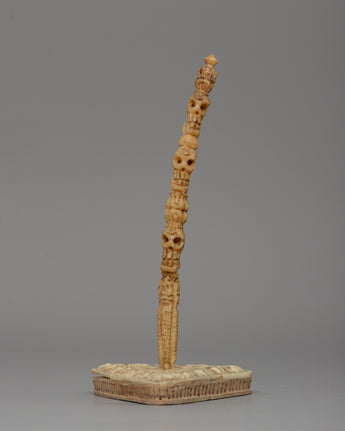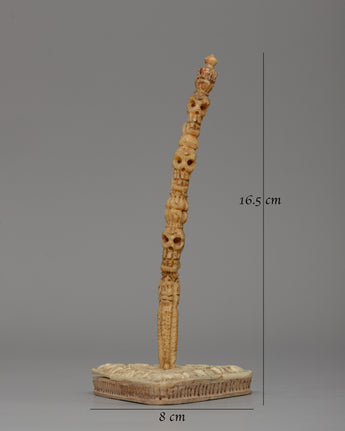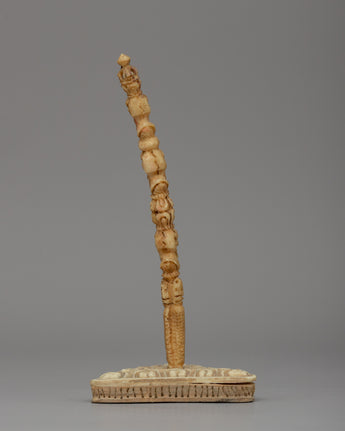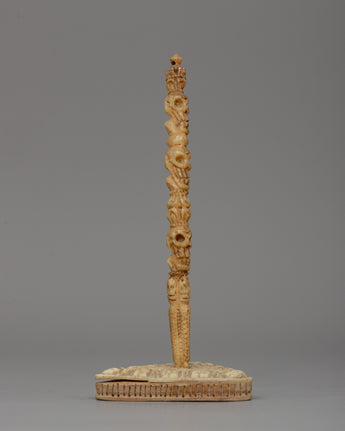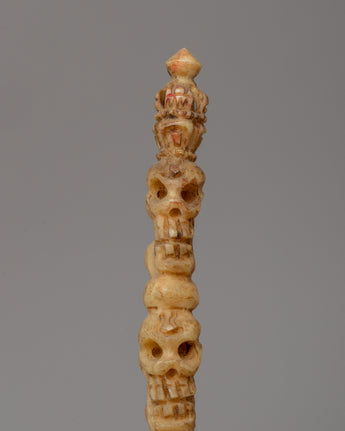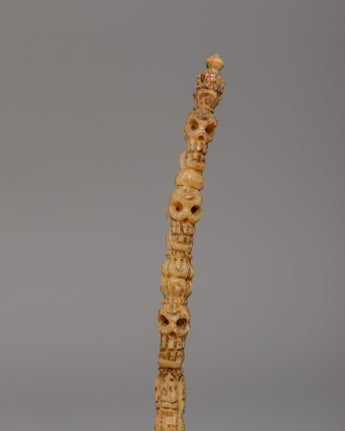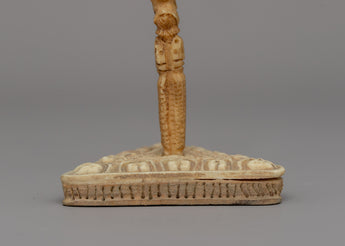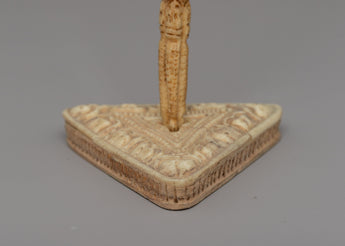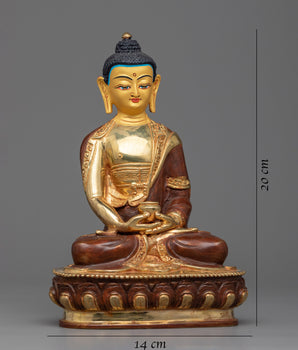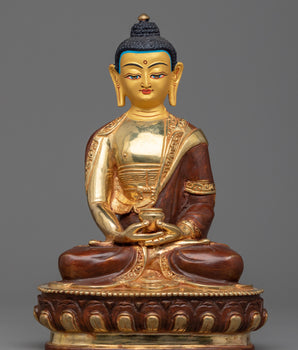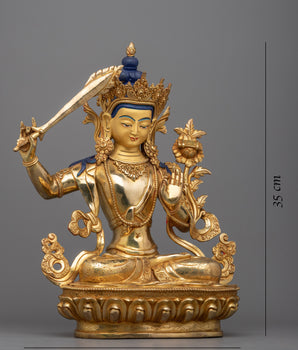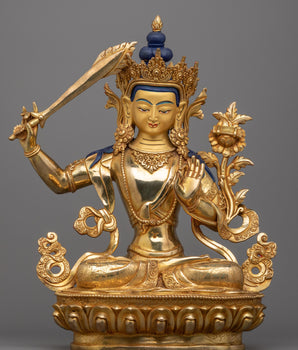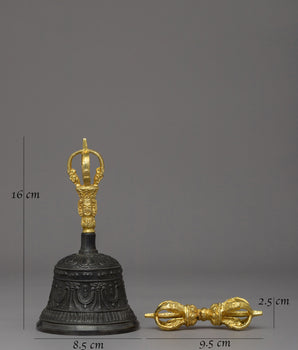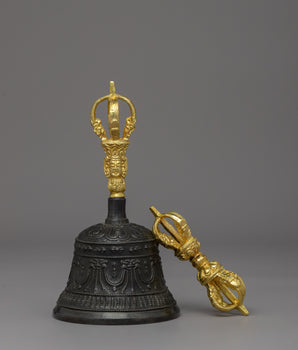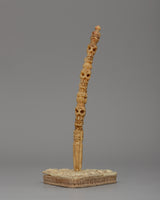
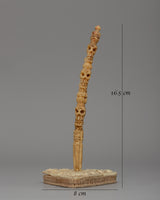
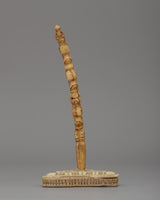
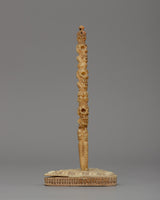
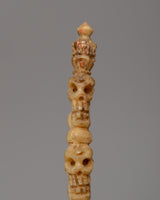
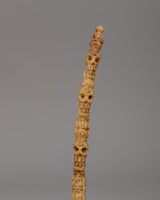
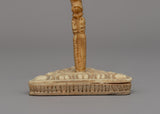
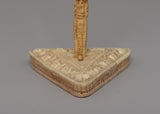
Handcrafted Phurba with Stand | A Buffalo Bone Tibetan Ritual Dagger

100% AUTHENTIC

HANDMADE

FREE SHIPPING
Traditionally Handcarved 16.5cm Phurba Dagger with Stand for Shrine.
--------------------------------------------------
Size: 16.5 cm(Height) x 8 cm(Base)
Weight: 0.054kg
Material: Ethically Sourced Buffalo Bone
--------------------------------------------------
About Our Ritual Dragger:
This hand-carved Phurba with stand is made of Ethically Sourced Buffalo Bone 16.5 cm tall, 8 cm wide, and weighs 0.054 kg. The design has a tall, slender form with intricately carved skull motifs, making it an important ritual object in Tibetan spiritual practices. The phurba is mounted on a sturdy base, which increases stability and allows it to be used effectively in ceremonies. Skulls are frequently depicted in Tibetan art as symbols of life's transience, assisting practitioners in focusing on impermanence and the imperishable nature of consciousness during meditation and ritual.
Buffalo bone is a potent material in Tibetan rituals, representing grounding, transformation, and spiritual connection. This phurba embodies these characteristics and is valued for its symbolism in the spiritual journey. The skull motifs reinforce the concept of impermanence, reminding practitioners of the fleeting nature of the material world and encouraging them to focus on enlightenment. The stand provides a practical element, allowing the phurba to be displayed or used during rituals without the risk of tipping over, cementing its status as a revered ritual tool.
Introduction To Headed Phurba :
The ceremonial dagger (Kila in Sanskrit; Phurba in Tibetan) is crucial for banishing evil and is considered especially useful in squelching the forces that obstruct Tantric Buddhist meditation. Its earliest known usage was as the core blade of the vajra that Indra used to kill the first cosmic serpent, Vritra, in the Hindu Rg Veda. It was undoubtedly related to Vedic sacrifices because the Sanskrit word for it, Kila, implies stake or peg. By meditation on the Vajrakila Tantra, an ancient Indian scripture that was first spread in Tibet in the eighth century by Padmasambhava, one of the founding gurus of Tibetan Buddhism, the three-headed Vajrakila Buddha is evoked.
-------------------------------------------------
How to set up your own Buddhist Shrine?
-Find a clean, quiet, and uncluttered spot.
-Set up an altar table, and cover it with an altar cloth that calls to you.
-Place your sacred item (statue, thangka, or a picture of Buddha) at the center.


